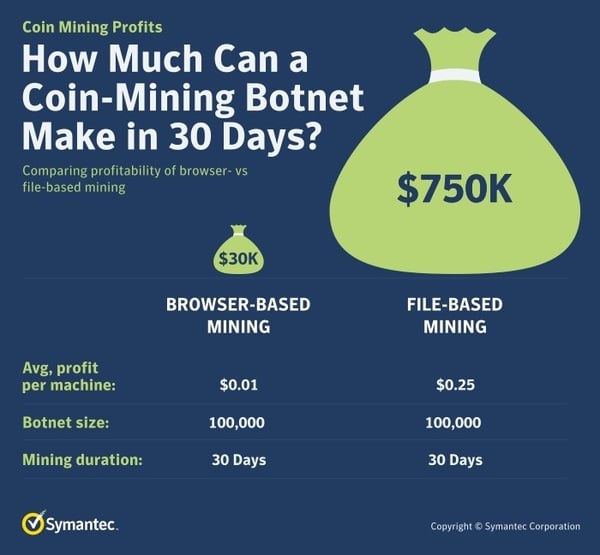
Summary: Researchers at Symantec are tracking a cryptojacking campaign that —for now—seems mostly to affect businesses in China. They're calling the campaign "Beapy," and the worm involved appears to be using the EternalBlue exploit to spread. So far Beapy has left individual users largely alone: it shows a distinct preference for enterprises.
Written in Python, the coinminer uses phishing with a malicious Excel document email as an initial infection vector, but also leverages the EternalBlue exploit and stolen and hardcoded credentials to spread to other machines on the compromised environment. This wormlike behavior suggests that the malware was probably always intended to target enterprises.
Detail: A new cyptojacking campaign targeting enterprises in Asia is leveraging the National Security Agency-linked DoublePulsar backdoor and the EternalBlue exploit for network spreading, Symantec reveals.
Dubbed Beapy, the campaign aims to drop a file-based coinminer onto compromised machines, to hijack their computing power for the attackers’ benefit. First observed in January 2019, the activity has been increasing since March, the security firm says.
Beapy is mostly focused on enterprises in Asia, with over 80% of its victims located in China. Others are located in South Korea, Japan, Hong Kong, Taiwan, the United States, the Philippines, Vietnam, and elsewhere.
The malware spreads via a phishing attack with a malicious Excel attachment that drops the DoublePulsar backdoor onto the target machine, to achieve remote execution. Next, a PowerShell command is executed and the command and control (C&C) server is contacted before the coinminer is downloaded.
Beapy targets unpatched machines to establish a foothold on the network, and leverages EternalBlue and credential-stealing Mimikatz to spread to other systems. The malware also uses a hardcoded list of usernames and passwords for further network compromise.
Cryptojacking might not be as disruptive as ransomware, but it could still have high impact on businesses by affecting devices’ performance, potentially reducing productivity, overheating batteries, and rendering devices unusable. This would also increase costs due to electricity usage, Symantec points out. Full article with more detail at Securityweek:
https://www.securityweek.com/cyptojacking-attacks-target-enterprises-nsa-linked-exploits






